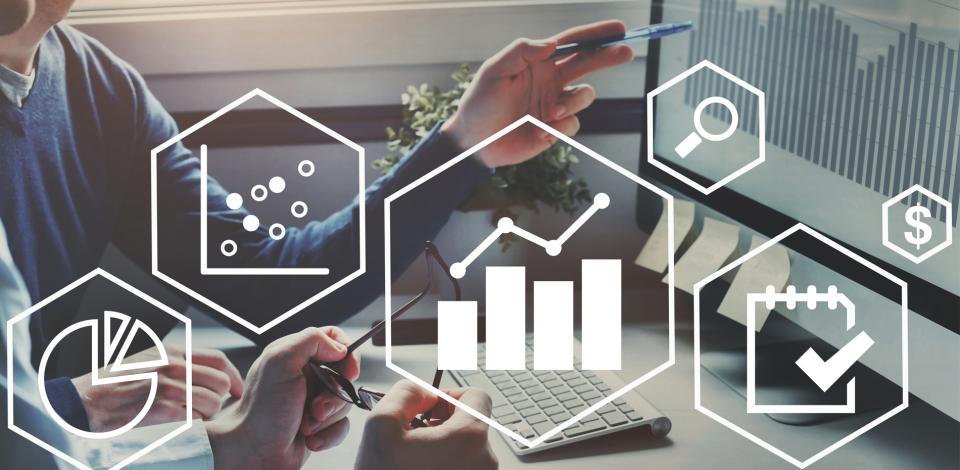Industry Trends: Data Science and Analytics
Check out how major technologies such as AI and virtual reality are driving trends in data science and analytics

Big data isn’t going away, and the better we understand what data reveals, the clearer the road to success. As a result, the skills involved in analytics and data science are in high demand across nearly every industry on the planet. In this article, we’ll look at some of the key analytics trends -- as well as a glance ahead to what the future may hold and what it means for the workforce.
Responsible AI
As it becomes increasingly clear that moral and ethical frameworks are necessary in data science, responsible AI becomes even more essential. There's no single standard for a responsible AI framework, but as pointed out by Aaron Burciaga of the Forbes Technology Council, the general goal is to ensure that we can take advantage of AI’s potential while maintaining trust and avoiding bias.
According to Polo Chau, professor of computing at Georgia Tech and associate director of the Master of Science in Analytics, responsible AI is highly important in our changing world where historical data doesn’t always tell the full story.
"It is important to not only focus on how to use the technology but assess why and when it is appropriate along with any downstream implications its use might cause. By harnessing the value of AI and data in a more intentional way, companies will be better equipped to utilize these tools ethically."
Natural Language Processing
Another huge trend in data science is Natural Language Processing (NLP), which boils down to the ability of computers and AI to understand and generate language. NLP has become a daily part of life thanks to the influx of virtual assistants, but its potential is far greater.
According to a recent Georgia Tech graduate of the Online Master of Science (OMS) in Analytics, Catherine Kromkowski, NLP will be a critical factor in how companies "listen" and adapt to the needs of their audiences and consumers by creating personalized and customer-friendly experiences.
“NLP improvements are going to make analysis more user-friendly and will be able to translate natural language queries into more database queries,” says Kromkowski. “That will reveal fast and dynamic insights customized to the user. You won't need to know how to do all the logical processing, and it will be more natural to how we speak every day. It will uncover a lot of insights from unstructured data that we have, like what we see in social media and online news and content.”
A crucial aspect of machine learning in general, NLP will enable us to draw on more data and open data analysis to more users in the near future.
Analytics Automation
As the dependence on data science becomes increasingly ubiquitous, it’s not always enough to merely be smart -- you also have to be fast. As a result, analytics automation has emerged as a trend that enables companies to leverage automated analytical tasks over manually generated reports.
According to technology writer Ramya Srinivasan, writing for Forbes, analytics automation enabled the retail sector to make several vital pivots in recent years, to both the threat of dominant e-commerce platforms and the challenges opposed by the Covid-19 pandemic.
Analytics automation, in conjunction with trends like NLP, can democratize data science and put powerful computational tools in the hands of more users via easy-to-use platforms. In many cases, we could see employees across the spectrum able to contribute to the analysis and use of data in the workplace rather than being limited only to specialists.
"Analytics automation allows us to apply and also to learn from data, thereby accelerating progress in supply chain processes," says Marianne Wilde, Supply Chain Analytics Certificate instructor with Georgia Tech Professional Education. "As an example, analyzing estimated versus realized transportation times allow us to gain insight into the quality of our predictions. Learning from these insights and automatically applying these learnings enables us to continuously improve."
Data Security
Given the frequency of data breach headlines in the news, it should come as no surprise that data security remains a major trend in data analytics. If companies are going to leverage user data to make informed business decisions and to improve their product, they have to be able to reasonably assure customers and clients that their data is secure.
As pointed out by Sandra Durcevic writing for the Data Pine Business Intelligence blog, data security spending continues to rise, fueled by governmental privacy regulations and the need for businesses to have a proper risk analysis, detection, and response strategy in place.
AR/ VR
Virtual reality often makes the list of future technology trends and, indeed, both virtual and augmented reality technologies will likely play an important role in the democratization of data analytics. These mediums could be key to creating experiential learning opportunities across the spectrum of education and transforming its delivery.
“AI could be vital in detecting human mannerisms such as speech or hand or eye movements, for example, indicating a student who may be lost or confused," says Joel Sokol, professor of industrial and systems engineering at Georgia Tech and director of the Master of Science in Analytics degree on campus and online. "This combination of AI, VR, and data would help educators know how to address and retain students, and create unique, personalized student experiences in online formats."
Business intelligence will also benefit from smart data discovery capabilities and overlays of computer-generated information that can enhance user ability to make sense of the data. “I think the whole AR/VR industry is starting to blossom and it'll actually change how we collect data and analyze data,” Kromkowski says. “We're going to have very different data points and a lot more 3D data, which is going to be really interesting. I think that will lead into a second emerging trend, which is the smart cities concepts and building of more digital communities in real life.”
What’s Next?
As for the future of the workforce, data, analytics, and AI will inform nearly every industry and how they operate. As the demand for these skills continues to rise, professionals will need to be capable of foreseeing and tapping into emerging trends in big data to stay ahead of the curve of best business practices.
"Skills in analytics and data science are widely applicable and in high demand across nearly every industry,” says Sokol. "As companies and organizations continue to innovate, they will need to stay abreast of analytics trends to capitalize on the increased opportunities and adjust their operational practices accordingly."
Editor: Shannon Helton-Amos
Digital Producer: Jose McKinney

